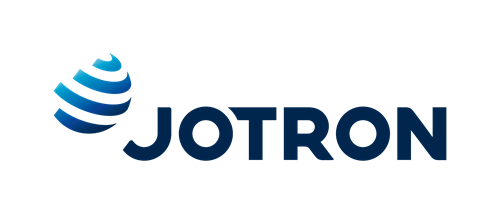EUROCONTROL’s Performance Review Commission publishes its Report on European Air Traffic Management performance in 2015

PRR 2015 has just been published by the independent Performance Review Commission (PRC) of EUROCONTROL. It gives an assessment of European Air Traffic Management (ATM) performance in 2015 across the key performance areas of Safety, Capacity, Environment, and Cost-efficiency.
Safety is the primary objective of Air Navigation Services (ANS). Overall, ANS Safety continues to be high in Europe with one accident with ANS contribution in 2015. However, there is scope for further improvement in order to maintain or even further improve safety levels in Europe.
Controlled flights in Europe increased for the second year in a row in 2015. However, the +1.5% growth in traffic in 2015 was not homogenous throughout the network and traffic flows were affected by the continuing Ukraine crisis and industrial action by air traffic controllers.
En-route Air Traffic Flow Management (ATFM) delays in the EUROCONTROL area increased for the second year in a row to reach 0.73 minutes per flight in 2015. “The performance deterioration was mainly attributed to ATC capacity issues and confirms the PRC concerns that ATFM delays could increase when traffic grows again if insufficient focus is being put on capacity planning and deployment” warns Ralph Riedle, PRC Chairman.
Despite further progress in the implementation of free route airspace in 2015, horizontal en-route flight efficiency deteriorated in 2015 after the continuous improvement over the past years.
European ANS cost-efficiency performance improved for the second year in a row in 2014, the latest year for which actual costs data is available. Compared to 2013, real en-route costs per service unit decreased by -5.0% and terminal unit costs decreased by -2.3%.
Click on the image below to download the report.
Executive Summary
Introduction
PRR 2015 presents an assessment of the performance of European Air Navigation Services (ANS) for the calendar year 2015. Note that the Cost-efficiency data presented in Chapter 6 relate to the calendar year 2014, which is the latest year for which actual financial data are available.
ANS in European Air Trasport
Controlled flights in Europe increased for the second year in a row in 2015 (+1.5% vs 2014). The observed growth is in line with the STATFOR (Feb. 2015) baseline forecast scenario (+1.5%) predicted for the area. Total flight distance (+1.8% vs.2014) and flight hours (+1.7% vs.2014) increased at a slightly higher rate due to, on average, longer flights.
According to the latest STATFOR 7-year forecast (Feb. 2016), flights are expected to grow by 2.4% in 2016 (Low: 1.0%; High 3.8%) and to continue with an average annual growth rate of 2.2% between 2015 and 2022 (Low: 0.7%; High 3.8%). Air traffic in Europe is expected to reach pre-economic crisis levels (2008) by 2017.
In absolute terms, Turkey, Bulgaria, Hungary, the UK, and Spain (Continental) experienced the highest year-onyear growth in 2015 and all of the six largest States in terms of traffic volume (Germany, France, UK, Italy, Spain, and Turkey) showed an increase in traffic in 2015. Turkey continued its remarkable traffic growth (average annual growth rate of 7% over the past 5 years) and shows a substantial growth in all segments (domestic, international, overflights).
The growth observed in a number of central European States (Bulgaria, Hungary, Czech Republic, Romania and Slovakia) was mainly related to overflows from traffic avoiding Ukrainian airspace. The shift in traffic patterns following the start of the Ukrainian crisis and the downing of MH17 in July 2014 led to a drastic reduction of traffic in Ukraine (-33.4%) and also Moldova (-19.3%) compared to 2014. The sustained closure of Libyan airspace (as of August 2014) continued to have a notable impact on Greece with traffic flows between Europe and Africa shifting from Maltese airspace to Greek airspace.
After the best year on record in 2013, arrival punctuality in Europe decreased for the second year in a row to 82.1% in 2015. Reactionary delay remains the largest single delay group (45.9%) in 2015, followed by delays due to turnaround issues. The further increase in en-route and airport ATFM delays in 2015 contributed also to the lower punctuality levels in 2015.
The variability of operations determines the level of predictability and has an impact on airline scheduling and also on the provision of ATC and airport capacity (i.e. TMA capacity, en-route capacity, gate availability, etc.). The lower the predictability, the more difficult it is to match capacity to demand without inefficiencies in terms of delay (insufficient capacity) or cost (underutilisation of resources). Whereas a certain level of variability is considered to be normal or even required in aviation, more research to better understand the drivers of operational variability within the system (operational planning, time definitions, tolerance windows, delay causes, etc.) could contribute to reducing system-wide variability with associated positive effects for capacity utilisation.
Aircraft noise has been generally recognised as the most significant environmental impact at airports. Political decisions on environmental constraints can impact operations in terms of the number of movements, route design, runway configuration and usage and aircraft mix (engine types, etc.). The main contributing factors towards reduced noise exposure are expected to come from measures with long lead times outside the control of ANS (land use planning, reduction of noise at source). Noise abatement operational procedures are the main area where ANS can actively contribute to the reduction and/or reshaping of the noise contour and the population affected by aviation noise.
The environmental impact of aviation on climate results from greenhouse gas (GHG) emissions including CO2, NOX, and contrails (H2O), formed by aircraft engine exhaust. By far the main contribution to decouple aviation emissions growth from air traffic growth is expected to come from alternative low carbon fuels, market based measures, technology developments (more efficient aircraft, advances in airframe and engine technology) and subsequent fleet renewals. The ANS-related impact on climate is closely linked to operational performance, which is largely driven by inefficiencies in the four dimensional trajectory and associated fuel burn (and emissions).
The total economic evaluation of ANS performance presents a consolidated view of direct ANS costs and estimated indirect ANS-related costs (ATFM delays, additional taxi-out and ASMA time, horizontal en-route flight efficiency) borne by airspace users. Based on the latest available information for 2015, total economic ANS-related costs in the SES area are estimated to increase by 4.8% compared to 2014. The increase is mainly driven by the deterioration of ANS-related operational performance in all areas (most notably in en-route and airport ATFM delays) and the projected increase in en-route ANS costs in 2015.
SAFETY (2014/2015)
The definition and guidance on the development of Acceptable Levels of Safety Performance (ALoSP) is currently not available in Europe. While there is an urgent need to provide this type of support and guidance to States, it is still not clear how this concept will be introduced within the regulatory environment. A common approach to measuring and managing safety performance from a regulatory perspective would also ensure a harmonised implementation of State Safety Programmes (SSP) and facilitate the exchange of safety information in the future.
The current safety reporting environment is changing and it has to be accepted that the next few years will be a transition phase. During this time, in order to maintain and improve European reporting, it is important that actors responsible for the collection of safety data work together in order to create an optimum solution.
Nevertheless, the PRC has to express its concern that during this transition phase, availability, completeness and quality of safety data may deteriorate due to the lack of arrangements between all parties involved in the process.
Operational En-route ANS Performance (2015)
The growth in traffic (1.5% from 2014) was not homogenous throughout the network, with significant disruption to traffic flows because of, inter alia, the continuing Ukrainian crisis and industrial action by air traffic controllers. The temporal spread of traffic was also interesting and 2015 witnessed the highest individual monthly totals for network traffic in July, August & September for ten years.
After the lowest level of en-route ATFM delay per flight on record in 2013, delays have been rising again over the past two years. In 2015, total en-route ATFM delays for the EUROCONTROL area increased by +23% which corresponds to 0.73 minutes of en-route ATFM delay per flight (0.61 in 2014).
The performance deterioration was mainly attributed to ATC capacity issues highlighting previous PRC concerns that ATFM delays could increase when traffic grows again.
As stressed already previously by the PRC, in view of the considerable lead times it is essential to carefully plan and also deploy capacity in line with projected traffic growth. Over-conservative capacity planning removes buffers against traffic variations and increases the risk of significant disruption to aircraft operations.
While capacity constraints can occur from time to time, area control centres (ACCs) should not generate high delays on a regular basis. The most constraining ACCs in 2015 were Nicosia, Brest, Athinai and Macedonia, Zagreb, Lisbon, Reims and Barcelona. Together, they accounted for 58.1% of all en-route ATFM delays but only 14.5% of total flight hours controlled in Europe.
Despite further progress in the implementation of free route airspace in 2015 (more than 20 airspace improvement packages in 2015), horizontal en-route flight efficiency deteriorated in 2015 after the continuous improvement over the past years. At European level, the inefficiency in filed flight plans increased from 4.70% to 4.74% in 2015. Inefficiencies in actual trajectories increased at a slightly higher rate from 2.72% to 2.77% in 2015.
Horizontal en-route flight efficiency improves notably on weekends, which is to some extent linked to lower traffic levels which appear to have a positive effect on flight efficiency but also due to the better availability of segregated and free route airspace on weekends, which are contributing factors towards improved flight efficiency.
In view of the numerous factors and complexities involved, and with traffic levels growing again, flight efficiency improvements will become more and more challenging and will require the continued joint efforts of all stakeholders, coordinated by the Network Manager.
Close civil military cooperation and coordination is a crucial enabler to improve capacity and flight efficiency performance. Although all EUROCONTROL Member States declare to be formally compliant with existing FUA legislation, the results of the civil military coordination and cooperation questionnaire suggest that there is scope for improvement in the underlying processes related to the management of the airspace.
The main identified issues are related to the lack of impact assessments; the definition of clear national strategic objectives at ASM level 1, and the interrupted information flow between the three levels of ASM.
Operational ANS Performance at Airports (2015)
In 2015, controlled movements (arrival + departure) at the top 30 airports in terms of traffic increased for the second year in a row. Overall, average daily movements increased by +2.3% compared to 2014 but with notable differences in growth between airports. Despite the further growth in 2014, traffic levels still remain 1.1% below the pre-economic crisis levels of 2008.
At the same time passenger numbers continued to increase at a higher rate than flights. Compared to 2014, the number of passengers at the top 30 airports increased by +5.3%, and, contrary to the number of flights, passenger numbers are 22.5% higher than in 2008.
Istanbul Sabiha Gökçen and Atatürk airports continued their growth also in 2015 with an increase in average daily traffic of 91 and 67 movements respectively. Over the past 10 years, Istanbul Sabiha Gökçen airport grew at an average annual rate of +29.8% and Istanbul Atatürk at an average rate of 8.2% per year. The continuous strong growth resulted in a substantial increase in airport ATFM arrival delays at the two Istanbul airports in 2015 with a notable impact on the European network. Together, the two airports accounted for 35.7% of all airport ATFM arrival delays in Europe in 2015. The new Istanbul airport presently under construction is expected to improve the situation. The airport is planned to open in different phases with an anticipated capacity for up to six runways, serving 150 million passengers by 2028.
Other airports with substantial traffic growth in 2015 were Athens (+13.9%), Dublin (+9.8%), London Stansted (+7.5%), Madrid (+7.0%), and Lisbon (+6.0%). Of the top 30 airports in terms of traffic in 2015, seven airports showed a traffic decrease.
Despite a number of disruptive events (e.g. industrial action), the average share of operational cancellations at the analysed airports remained at 1.5% in 2015.
Overall, the traffic increase appears to have contributed to the higher levels of operational inefficiency at some airports. As a result, all four indicators measuring operational ANS performance at the top 30 airports showed performance deterioration in 2015.
The top 30 European airports accounted for 45.7% of total European airport movements and 88.7% of total airport ATFM arrival delays in 2015. Despite a higher number of regulated flights, ATFM slot adherence continued to improve in 2015, particularly due to a notable improvement at London Heathrow.
Although not included in the top 30, it is noteworthy to point out that a number of small Greek airports accounted for 5.1% of European airport arrival ATFM delays with average delays per arrival of up to 11.5 minutes. Although the traffic volume at those smaller airports is comparatively low, the network impact in terms of reactionary delay is significant.
The poor performance at Greek regional airports is linked to seasonal traffic in summer. It and was already observed in 2011 when the Network Management Unit successfully worked together with those airports to improve performance. It would be important to revive the measures applied in 2012 in order to avoid high delay levels in 2016.
In order to address a growing stakeholder interest, vertical flight efficiency performance on climb and descent operations at 15 selected airports was measured. This first high-level analysis of continuous climb and descent operations revealed notable performance differences among airports which should be investigated further. The observed differences are caused by a number of reasons including congested airspace, restrictions from neighbouring ANSPs, and traffic density.
ANS Cost-efficiency (2014)
PRR 2015 analyses performance in 2015 for all KPIs, except for cost-efficiency, which analyses performance in 2014 as this is the latest year for which actual financial data are available. On the other hand, PRR 2015 also presents an outlook for 2015-2019 in terms of cost-efficiency trends.
The Pan-European system (38 States) en-route cost-efficiency performance in 2014 improved for the second year in a row. Following the -3.3% decrease in 2013, real en-route unit costs decreased further reaching 50.5€2009 per service unit which corresponds to a -5.0% reduction compared to 2013.
The overall reduction of real en-route unit costs in 2014 is mainly due to the notable traffic growth (+5.9%) while actual en-route ANS costs increased by +0.6% during the same time. Despite the substantial traffic growth in 2014, it is worth noting that en-route service units are still below the forecasted level for 2014.
In 2014, operating costs accounted for 82% of en-route costs (staff costs for 58% and other operating costs for 24%), followed by depreciation (12%) and cost of capital (6%). Year-on-year, staff costs remained almost stable (+0.4% vs. 2013) while other operating costs increased by +1.8% in 2014.
The evaluation of differences in trends and behaviour between those States operating in the context of the SES Regulations and the other states in the Route Charges System does not yet show a clear cut trend and it is likely that a longer period would need to be considered. Moreover, the trend in non-SES States is to a large extent influenced by Turkey for which a significantly high traffic growth has been observed over the past years.
Under the determined costs method, applied by SES States as of 2012, the amounts ultimately paid by airspace users differ from the actual costs due to the traffic risk sharing, cost-sharing, and other adjustments provided in the Charging Regulation. It is therefore important to monitor not only the actual costs incurred by States/ANSPs, but also the amounts ultimately charged to the airspace users in respect of the activities of that year (a concept also referred to as the “true cost for users”). In 2014, the “true costs for users” were +2.8% higher than the actual costs of States/ANSPs but -2.1% lower than the determined costs provided for 2014 in the RP1 performance plans, which suggests that the service providers were able to adjust their costs downwards in line with the lower than predicted traffic level in 2014.
The outlook for 2015-2019 suggests that the en-route unit cost is expected to decrease from 50.5€2009 in 2014 to 46.4€2009 in 2019, representing a decrease of -1.7% p.a. on average until 2019. Overall, at Pan-European level between 2009 and 2019, the trend in total en-route costs is planned to remain flat, while traffic (SUs) is planned to increase by some +31%, implying substantial cost-efficiency improvements over this 10-years cycle.
European terminal ANS cost-efficiency performance (29 states comprising 33 Terminal Charging Zones which include a total of 230 airports in 2014) followed a similar pattern as observed for en-route cost efficiency in 2014. Year-on-year, terminal ANS unit costs decreased by -2.3% versus 2013 due to terminal service units (TNSUs) growing stronger (+2.9% vs. 2013) than real terminal ANS costs (+0.6% vs. 2013).
The outlook for 2015-2019 suggests that SES total terminal ANS costs are planned to slightly decrease over the period 2015-2019 (i.e. on average by -0.5% p.a.), while TNSUs are foreseen to increase at an average rate of +2.0% per year, representing a decrease of -2.5% per year on average in the terminal ANS unit costs. This is a slightly better trend than for en-route.
Detailed benchmarking analysis focusing on ANSPs cost-efficiency at Pan-European system shows that the gateto-gate unit economic costs decreased for the 4th year in a row to reach an amount of €479 per composite flighthour in 2014, which is the lowest level achieved since the start of the ACE benchmarking analysis in 2001. This performance improvement mainly reflects a decrease in unit ATM/CNS provision costs (-1.9%) while the unit costs of ATFM delays rose by 11.4% compared to 2013.
Overall, despite the impact of the economic recession of the ATM industry in 2009, the cost-effectiveness performance of the Pan-European system significantly improved since 2004. Indeed, in 2014 unit ATM/CNS provision costs are -9.4% lower than in 2004. This performance improvement should be seen in the light of the cost-containment measures initiated in 2009-2010 which continued to generate savings years after their implementation, and for the ANSPs operating in SES States, the implementation of the performance scheme which contributed to maintain a downward pressure on costs during RP1.

.png)

.jpg)





Comments
There are no comments yet for this item
Join the discussion